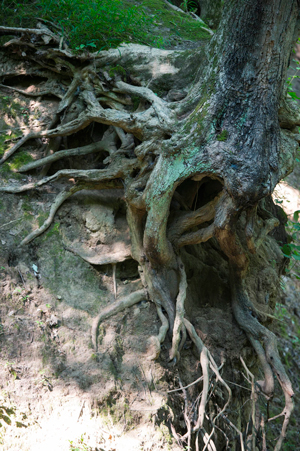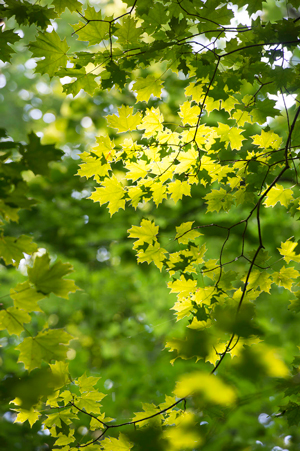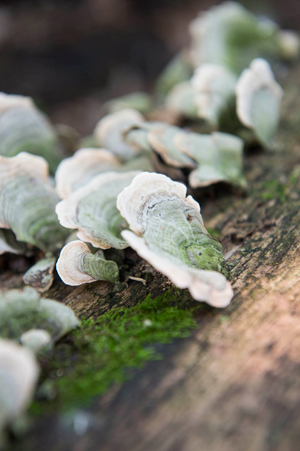SIUE’s 2,660-acre campus provides faculty, staff and students ample opportunities for research and teaching in a natural field setting. The following list of publications and projects reflect a small portion of the extensive scholarly activity conducted in the Nature Preserve and other natural areas on the University campus.
Publications
Funded Grants
Presentations
Master’s Theses
Undergraduate Projects
Publications
Essner, R. L., Jr., Z. R. French, L. M. Richter, and P. R. Minchin. 2012. Bohm Woods and the SIUE Nature Preserve: Valuable Conservation Assets for Southwestern Illinois. Meadowlark. 21:25.
Richter, L., R. L. Essner Jr., and P. R. Minchin. 2010. A survey of bluff forest avifauna in Southwestern Illinois. Transactions of the Illinois State Academy of Science 103:3948.
Schulz, K., J. Wright, and S. Ashbaker. 2012. Comparison of invasive shrub honeysuckle eradication tactics for amateurs: stump treatment versus regrowth spraying of Lonicera maackii. Restoration Ecology 20(6): 788793.
National Great Rivers Research and Education Center Grant. 2010. Title: Status of a Small Mammal ForestFloor Community Assemblage in Southwestern Illinois (R. Essner, PI; P. Minchin, CoPI). Amount $6,000
Illinois Department of Natural Resources Wildlife Preservation Fund. 2008. Title: A Multivariate Habitat Model for the State Threatened Cerulean Warbler and other Neotropical Migrant Songbirds in Southwestern Illinois (R. Essner, PI; P. Minchin, CoPI). Amount $2,000
Illinois Ornithological Society Grant. 2008. Title: A Multivariate Habitat Model for the State Threatened Cerulean Warbler and other Neotropical Migrant Songbirds in Marketing and Communications | back to top Southwestern Illinois (R. Essner, PI; P. Minchin, CoPI). Amount $500
National Great Rivers Research and Education Center Grant. 2008. Title: A Multivariate Habitat Model for the State Threatened Cerulean Warbler and other Neotropical Migrant Songbirds in Southwestern Illinois (R. Essner, PI; P. Minchin, CoPI). Amount $6,000
National Great Rivers Research and Education Center Grant. 2008. Title: Patterns of Native and Exotic Plant Diversity in Fragmented Bluff Forests: a Test of the Biotic Resistance Hypothesis (P. Minchin, PI; R. Essner, CoPI;). Amount $6,000
National Great Rivers Research and Education Center Grant. 2007. Title: Ecology of the Southern Flying Squirrel in a Fragmented Riparian Corridor (R. Essner, PI; P. Minchin, CoPI). Amount $5,950
Illinois Department of Natural Resources Wildlife Preservation Fund Grant. 2006. Title: Monitoring a flying squirrel population with nest boxes in a fragmented suburban landscape. Amount $2,000
French, Z., Minchin, P., and R.L. Essner, Jr., 2012. Analysis of avian communities in fragmented oakhickory forest in southwestern Illinois. Presented to Illinois State Academy of Science Meetings, March 2012.
Albus, A., Essner, R. L., and Minchin, P. 2010. Status of a Small Mammal ForestFloor Community Assemblage in Southwestern Illinois. Presented to National Great Rivers Research and Education Center, July 2010.
Richter, L. A., Essner, R. L., and Minchin, P. R. 2009. A multivariate habitat model for neotropical migrant songbirds in southwestern Illinois. Presented to Illinois State Academy of Sciences, April 2009.
Richter, L. A., Essner, R. L., and Minchin, P. R. 2008. A multivariate habitat model for neotropical migrant songbirds in southwestern Illinois. Presented to National Great Rivers Research and Education Center, August 2008.
Scaggs, F., Essner, R. L., and Minchin, P. R. 2007. Ecological and genetic monitoring of the Southern Flying Squirrel in a fragmented riparian corridor. Presented to National Great Rivers Research and Education Center Symposium, August, 2007.

Brady, Katherine. 1999. Silica and Phosphorus in Cougar Lake. Masters Thesis, Environmental Sciences Program.
Bragg, Rachel. 2008. A Study of Trillium Flexipes and Trillium Recurvatum on the SIUE Campus. Masters Thesis, Biological Sciences.
Carlson, Mark A. 1982. Accumulation Rates of Heavy Metals in Cougar Lake Sediment. Masters Thesis, Environmental Sciences Program.
Choi, Young Dong. 1984. Heavy Metals in Cougar Lake Fish. Masters Thesis, Environmental Sciences Program.
Cox, Jim. 1998. Bird Survey of the Sweet William Trail. Masters Thesis, Environmental Sciences Program.
Deming, Tricia. 1999. Manganese cycling in Cougar Lake SIUE Forest. Masters Thesis, Environmental Sciences Program.
Lynn, Kenneth. 1982. Bank Swallows on the Sweet William Trail. Masters Thesis, Biological Sciences Program.
Nair, P. Satesh. 1993. Iron Cycling in Cougar Lake. Masters Thesis, Environmental Sciences Program.
Novak, Dave. 2005. Heat Budget for Cougar Lake. Masters Thesis, Biological Sciences Program.
Ottensmeier, Shelly. 2005. Stable isotopes of Nitrogen and Carbon in Cougar Lake Seston. Masters Thesis, Environmental Sciences Program.
Rieger, Chad. 2002. Phosphorus budget for Cougar Lake. Masters Thesis, Environmental Sciences Program.
Tripp, Tim. 2012. Comparisons of lead concentrations in fish tissues from two southwestern Illinois lakes. Masters Thesis, Biological Sciences Program.
Grant, Nick. 2006. Benthic invertebrates of Cougar Lake. BS, Biological Sciences.
Hayes, Adam. 2002. Inorganic Carbon cycling in Cougar Lake. BS, Biological Sciences.
James, Brandon. 2006. Survival of tree seedlings on the SIUE Campus. BS, Biological Sciences.

Martin, Beth. 2007. Nitrate in Cougar Lake. BS, Biological Sciences.
Lepping, Brian. 2009. Stable isotopes of carbon and nitrogen in Gizzard Shad from Cougar Lake. BS, Biological Sciences.
Martyn, Chris. 2009. More tree seedling survival studies on the SIUE campus. BS, Biological Sciences.
Micah, Miranda. 2003. Preliminary study of temperature variation in Cougar Lake using portable dataloggers. BS, Biological Sciences.
Munyon, Jay. 2006. Stable Isotopes of Nitrogen and Carbon in Cougar Lake. BS, Biological Sciences.
Ross, Andrew Tiler, 2008. Mammal Behavior and Concentration in Urban Settings vs. Rural Settings. BS, Anthropology.
Schneider, Natalie. 2005. Condition factors in Cougar Lake Fish. BS, Biological Sciences.
Williams, Phil. 2009. Stable isotopes of carbon and nitrogen in Cougar Lake sediments. BS, Biological Sciences.

.